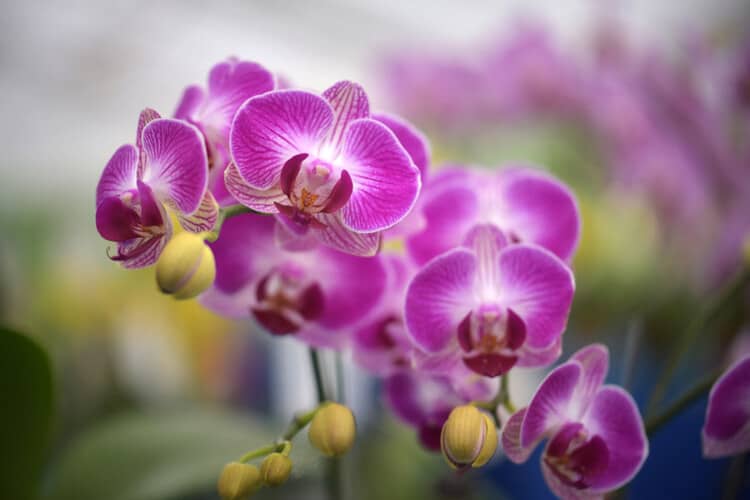Sign up for our newsletter
Get Swipe Garden's independent reviews, and expert advice sent straight to your inbox.
For information privacy practices, read our Privacy Policy.
Sign up for our newsletter
Get Swipe Garden's independent reviews, and expert advice sent straight to your inbox.
For information privacy practices, read our Privacy Policy.
Sign up for our newsletter
Get Swipe Garden's independent reviews, and expert advice sent straight to your inbox.
For information privacy practices, please read our Privacy Policy.

Fertilizing can help speed up the development of your plant. Yet, is this concept always true for the orchid? Should you fertilize orchids when they are in bloom?
While the orchid is blooming, it may not require as much orchid fertilizer, but it can still benefit from feeding. The best time to fertilize your orchid is when the flowers have fallen. Your plant requires nutrients to rebloom. Swipe Garden provides comprehensive guidance on correctly feeding your plant when it is flowering.
Yes, you should water the orchids regularly when they are in bloom to support new root and leaf growth. Certain varieties, like Dendrobiums and Cattleyas, prefer to dry out between waterings. Meanwhile, others, like the Paphiopedilums and Phalaenopsis, prefer to stay moist evenly.
Defining ‘uniformly wet’ can be challenging. Growing orchids in a transparent plastic pot can be the easiest way to keep them equally hydrated. You can keep a close eye on the potting mix medium and the roots that way. The presence of water on the pot’s sidewalls indicates that the plant is wet. Before watering again, you need to wait until the majority of the water has evaporated.
Read more: When Should You Fertilize Orchids? (Two Ideal Seasons)
Fertilizers can contribute to the success of your crop, but they are not the sole determining factor. Yet, it doesn’t mean that you have to feed phalaenopsis orchids at every stage of their life cycle. During their dormant stage, Phalaenopsis orchids do not require orchid fertilizer. Additionally, if your orchid plant, Phalaenopsis orchids, is producing buds or getting sick, stop feeding them.
You may notice that the orchid remains inactive at times. There will be no beautiful blooms, orchid roots, or leaf development during this period. You should stop feeding your plant. If it becomes dormant, stop watering it too. When the new growth occurs, the orchid starts the next phase of its life cycle and will demand more orchid fertilizer, organic fertilizer, and orchid food.
If buds are starting to form, it is advisable to wait until they are fully developed before applying fertilizer. Nutrition during bud growth might cause bud collapse.
Lastly, if your plant is sick or stressed, wait for it to recover before resuming feeding. To heal an overwatered plant, you need to place it in a shady area and increase the moisture. By draping a plastic bag over the plant, you can build a mini-greenhouse.
Nitrogen is a vital nutrient for many plants, including orchids, but it is not the sole essential nutrient. However, during the flowering stage, nitrogen isn’t the most crucial nutrient for your indoor plants. Instead, it is advisable to provide them with additional phosphorus (P) and potassium (K).
Plant development has ceased, and large amounts of nitrogen are no longer necessary. Potassium is necessary for the generation of proteins, carbohydrates, sugars, and cell division. Phosphorus regulates water balance and increases stem stiffness as well as cold tolerance. It also improves flower color and oil concentration. Here is how to feed your plant properly:
Phalaenopsis orchid plants can have as few as two or three flowers or as many as a hundred. There are hundreds of different hybrids of the Phalaenopsis orchid that come in a rainbow of colors, shades, and patterns.
Caring for orchids involves more than just fertilizing and watering. After flowering, you should take extra steps to give your plant proper care.
You can remove the flower spike by cutting it close to the plant’s base. If the old stem begins to turn yellow or brown, this is the way to go. Flowers will not bloom on dead stems. Cutting the stem will direct the orchid’s vitality towards root growth, resulting in a stronger plant with an increased likelihood of new flower spikes.
After flowering, your orchid requires a bright and indirect light environment to support its growth. Also, provide it with a temperature of roughly 75°F during the day and 65°F at night. You can try moving them to a place where the night temperature is slightly cooler, around 55°F, to encourage them to flower. Ensure that the location receives an adequate amount of bright light throughout the day.
Is it advisable to fertilize orchids while they are blooming? The best time to feed orchids may not be during the blooming period. However, fertilization is still possible. Remember to balance the NPK ratio in the fertilizers. Your orchid now needs P and K more than N.
Hopefully, you will find this article helpful. If you need any further information, please feel free to ask. Thank you, and we’ll see you in our next update!